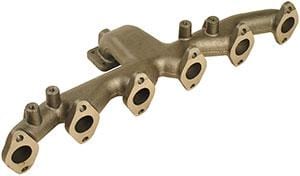
Car exhaust manifold device
Content
The efficiency of any internal combustion engine depends not only on the type of fuel system and on the structure of the cylinders with pistons. The exhaust system of the car plays an important role. It is described in detail about her in another review... Now let's look at one of its elements - the exhaust manifold.
What is an exhaust manifold
An engine manifold is a series of pipes that are connected to one pipe on one side, and on the other, are fixed on a common bar (flange) and fixed on the cylinder head. On the cylinder head side, the number of pipes is identical to the number of engine cylinders. On the opposite side, a small muffler (resonator) Or catalystif it is in the car.
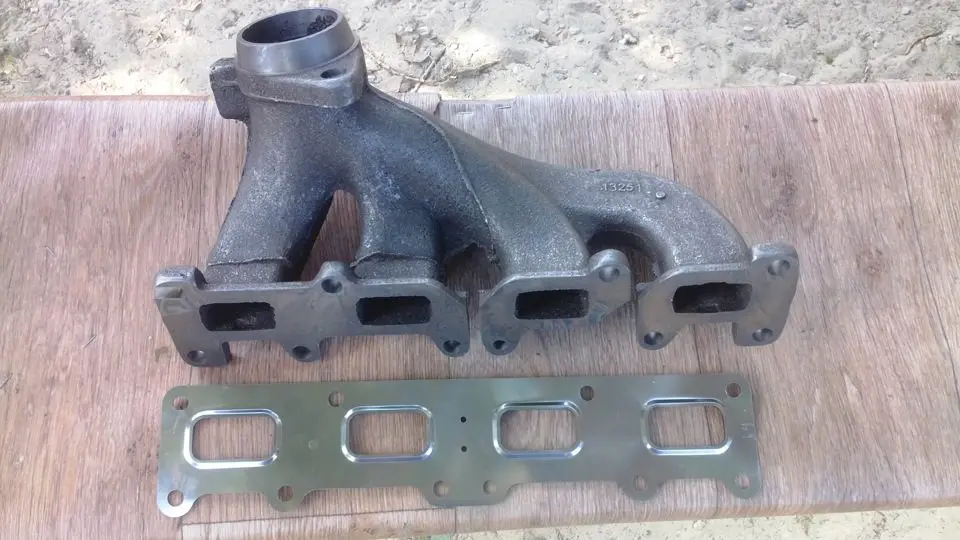
The collector device resembles intake manifold... In many engine modifications, a turbine is installed in the exhaust system, the impeller of which is driven by the flow of exhaust gases. They rotate the shaft, on the other side of which the impeller is also installed. This device injects fresh air into the engine's intake manifold to increase its power.
Usually this part is made of cast iron. The reason is that this element is constantly in extremely high temperatures. Exhaust gases heat the exhaust manifold to 900 degrees or more. In addition, when a cold engine is started, condensation forms on the inner wall of the entire exhaust system. A similar process occurs when the engine is shut off (especially if the weather is wet and cold).
The closer to the motor, the faster the water will evaporate while the motor is running, but the constant contact of metal with air accelerates the oxidative reaction. For this reason, if an iron analogue is used in the car, it will quickly rust and burn out. It is not possible to paint this spare part, because when heated to 1000 degrees, the paint layer will quickly burn out.
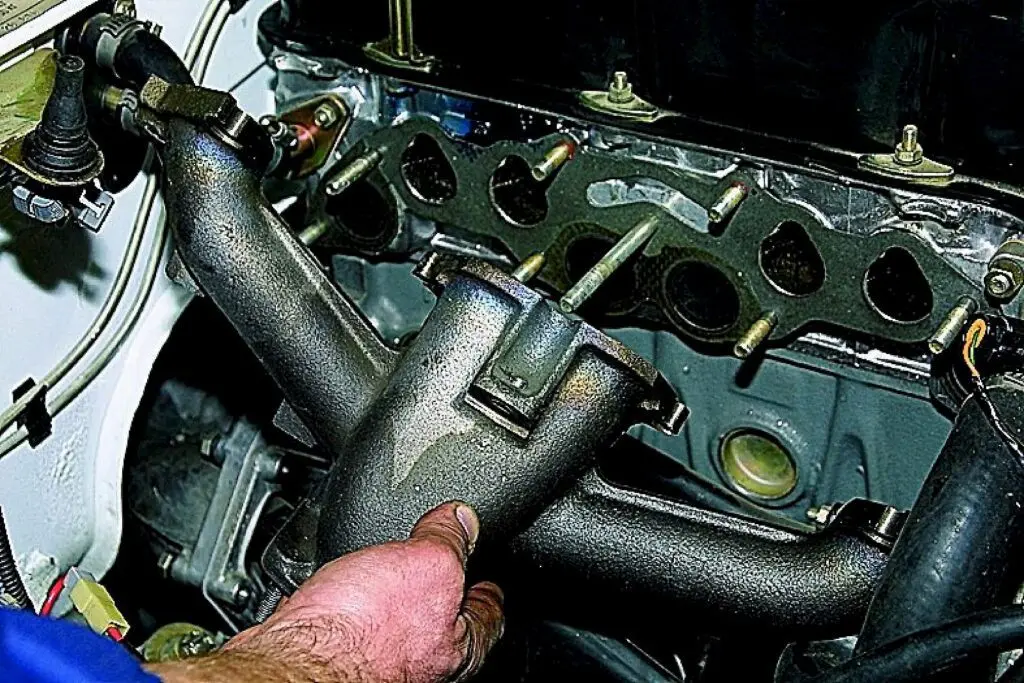
In modern cars, an oxygen sensor (lambda probe) is installed in the exhaust manifold (usually near the catalyst). Details about this sensor are described in another article... In short, it helps the electronic control unit to control the composition of the air-fuel mixture.
Typically, this part of the exhaust system lasts as long as the entire vehicle. Since this is just a pipe, there is nothing to break in it. The only thing that fails is the oxygen sensor, turbine and other parts related to the operation of the exhaust. If we talk about the spider itself, then over time, due to the peculiarities of the operating conditions, it can burn out. But this rarely happens. For this reason, motorists rarely have to deal with the repair or replacement of the exhaust manifold.
The principle of operation of the exhaust manifold
The operation of a car's exhaust manifold is very simple. When the driver starts the engine (regardless of whether it is petrol or diesel units), the combustion of the air-fuel mixture occurs in the cylinders. On the cycle of release gas distribution mechanism opens the exhaust valve (there may be one or two valves per cylinder, and in some ICE modifications there are even three of them for better ventilation of the cavity).
When the piston rises to top dead center, it pushes all combustion products through the resulting exhaust port. Then the flow enters the front pipe. To prevent hot exhaust from entering the cavity above adjacent valves, a separate pipe is installed for each cylinder.
Depending on the design, this pipe is connected at some distance with the neighboring one, and then they are combined into a common path in front of the catalyst. Through a catalytic converter (in it, substances harmful to the environment are neutralized), the exhaust goes through the small and main silencers to the exhaust pipe.
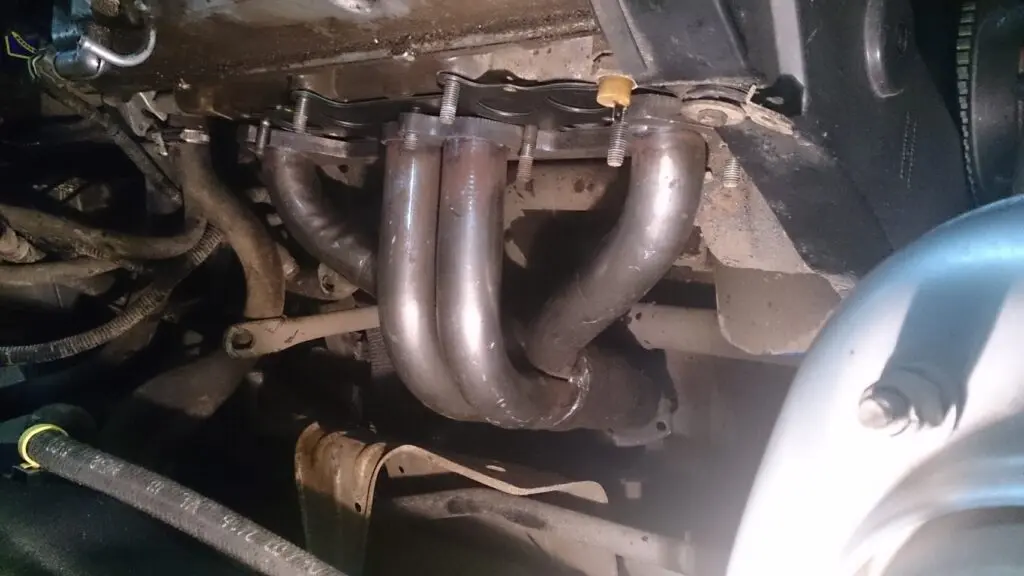
Since this element can change the power characteristics of the engine to some extent, manufacturers develop different types of spiders for motors.
When exhaust gases are removed, pulsation is generated in the exhaust tract. During the manufacture of this part, manufacturers try to design it in such a way that these oscillations are as synchronous as possible with the wave process occurring in the intake manifold (in some cars, at a certain operating mode of the unit, both the intake and exhaust valves open for a short time for better ventilation). When a portion of exhaust gas is abruptly pushed into the tract, it creates a wave that reflects off the catalyst and creates a vacuum.
This effect reaches the exhaust valve almost at the same time that the corresponding piston performs the exhaust stroke again. This process facilitates the removal of exhaust gases, which means that the motor has to spend less torque to overcome resistance. This design of the path makes it possible to maximally facilitate the removal of fuel combustion products. The more revolutions of the motor, the more efficiently this process will take place.
However, in the case of classic exhaust systems, there is little problem. The fact is that when the exhaust gases create a wave, due to the short pipes, it is reflected into the adjacent paths (they are in a calm state). For this reason, when the exhaust valve of another cylinder is opened, this wave creates an obstacle for the exhaust outlet. Because of this, the motor uses some of the torque to overcome this resistance, and the power of the motor decreases.
What is the exhaust manifold for?
So, as you can see, the exhaust manifold in the car is directly involved in the removal of exhaust gases. The design of this element depends on the type of motor and the manufacturer's methodology, which he implements in the manufacture of the manifold.
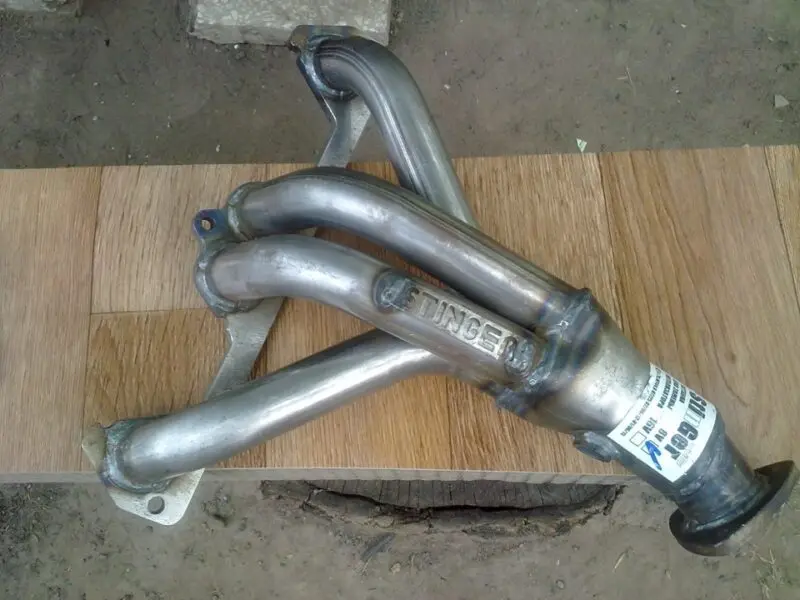
Regardless of the modification, this part will consist of:
- Receiving pipes. Each of them is designed to be fixed over a specific cylinder. Often, for ease of installation, they are all fixed to a common strip or flange. The dimensions of this module must exactly match the dimensions of the corresponding holes and grooves on the cylinder head so that exhaust does not leak through this discrepancy.
- Exhaust pipe. This is the end of the collector. In most cars, all pipes converge in one, which is then connected to a resonator or catalyst. However, there are modifications of exhaust systems in which there are two separate tailpipes with individual mufflers. In this case, a paired number of pipes are connected into one module, referring to a separate line.
- Sealing gasket. This part is installed between the cylinder head housing and the spider rail (as well as on the flange between the downpipe and the spider). Since this element is constantly exposed to high temperatures and vibrations, it must be made of durable materials. This gasket prevents exhaust gases from leaking into the engine compartment. Since fresh air for the car interior comes from this part, it is important for the safety of the driver and passengers that this element is of high quality. Of course, if the gasket breaks through, you will immediately hear it - strong pops will appear due to the high pressure inside the tract.
Types and types of exhaust manifolds
Here are the main types of exhaust manifolds:
- Whole. In this case, the part will be solid, and channels are made inside, converging into one chamber. Such modifications are made of high-temperature cast iron. In terms of resistance to serious temperature changes (especially in winter, when a cold case heats up from -10 or less, depending on the region, up to +1000 degrees Celsius in a matter of seconds), this metal has no analogues. This design is easy to manufacture, but it does not conduct exhaust gases as efficiently. This negatively affects the purging of the cylinder chambers, due to which some of the torque is used to overcome the resistance (gases are removed through a small hole, therefore the vacuum in the exhaust tract is of great importance).

- Tubular. This modification is used on modern cars. Usually they are made from stainless steel, and less often from ceramics. This modification has its advantages. They make it possible to improve the characteristics of cylinder blowing due to the vacuum generated in the path due to wave processes. Since in this case the piston does not have to overcome resistance at the exhaust stroke, the crankshaft spins up faster. In some engines, due to this improvement, it is possible to increase the power of the unit by 10%. On conventional cars, this increase in power is not always noticeable, so this tuning is used on sports cars.

The diameter of the pipes plays an important role in the exhaust manifold. If a spider with a small diameter is installed on the machine, then the achievement of the rated torque is shifted towards low and medium revolutions. On the other hand, the installation of a collector with pipes of a larger diameter allows you to remove the maximum power of the internal combustion engine at high speeds, but at low speeds, the power of the unit decreases.
In addition to the diameter of the pipes, their length and the order of connection with the cylinders are of great importance. Therefore, among the elements for tuning the exhaust system, you can find models in which the pipes are twisted, as if they were connected blindly. Each motor requires its own manifold modifications.
A 4-4 spider is often used to tune a standard 1-cylinder engine. In this case, four nozzles are immediately connected into one pipe, only at the maximum possible distance. This modification is called short. An increase in engine power is observed only if it is forced, and then at speeds above 6000 per minute.
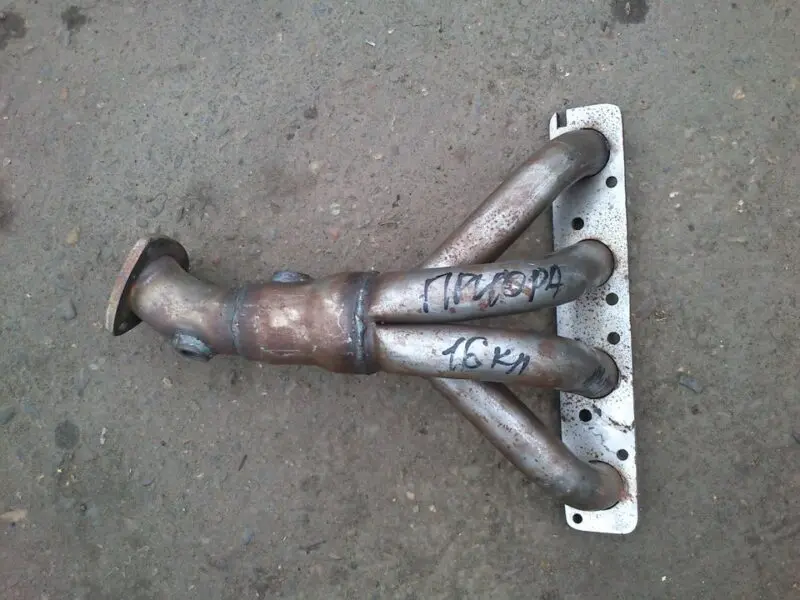
Also among the options for tuning sports cars are the so-called long spiders. They usually have the compound formula 4-2-1. In this case, all four pipes are first connected in pairs. These pairs of pipes are connected into one at the furthest distance from the motor. Usually, pipes are taken in a pair, connected to cylinders, which have the maximum parallel outlet (for example, the first and fourth, as well as the second and third). This modification provides an increase in power in a much wider rpm range, but this figure is not so noticeable. On domestic car models, this increase is observed only in the range from 5 to 7 percent.
If a direct-flow exhaust system is installed in the car, then intermediate pipes with an increased cross-section can be used to facilitate ventilation of the cylinders and damp the sound. Often, in the modification of long spiders, a small muffler with a low resistance can be used. Some models of collectors in certain areas cut bellows (metal corrugations) into the pipes. They dampen resonating waves that impede the free flow of exhaust. On the other hand, the corrugations are short-lived.
Also, among the long spiders, there are modifications with a 4-2-2 connection type. The principle is the same as in the previous version. Before deciding on such a modernization of the exhaust system, you need to take into account that the increase in power only due to the removal of the catalyst (so that the pipes are longer) gives a maximum of 5%. Installing a spider will add about two percent to the performance of the motor.
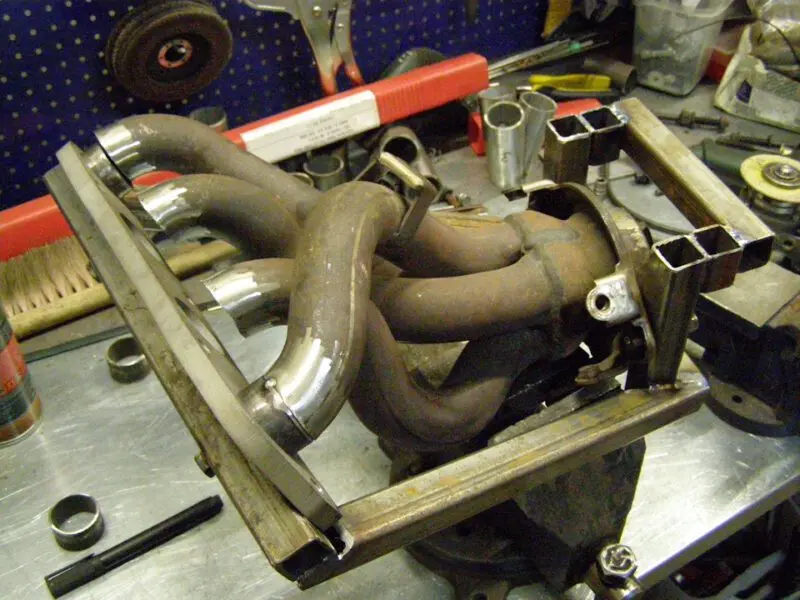
To modernize the power unit was more tangible, in addition to these works, a number of procedures still need to be carried out, including chip tuning (for details on what it is, read separately).
What affects the condition of the collector
Although the exhaust manifold often has the same working life as the entire vehicle, it can also fail. Here are the typical breakdowns associated with the exhaust manifold:
- The pipe is burnt out;
- Corrosion has formed (applies to steel modifications);
- Due to excessively high temperature and manufacturing defects, dross may form on the surface of the product;
- A crack has formed in the metal (when the motor has been running at high speeds for a long time, and cold water gets on the collector surface, for example, when driving into a puddle at high speed);
- The metal has weakened due to frequent changes in the temperature of the walls of the part (when heated, the metal expands, and when cooled, it contracts);
- Condensation forms on the walls of the pipes (especially if the car rarely leaves, for example, in winter), due to which the metal oxidation process is accelerated;
- Soot deposits have appeared on the inner surface;
- The manifold gasket is burnt out.
These malfunctions can be indicated by the following factors:
- The engine signal on the dashboard came on;
- A strong smell of exhaust gases appeared in the cabin or under the hood;
- The motor is unstable (rpm floats);
- When the engine is started, extraneous sounds are heard (their strength depends on the type of damage, for example, if the pipe is burnt out, it will be very loud);
- If the machine has a turbine (the impeller rotates due to the pressure of the exhaust gases), then its power decreases, which affects the dynamics of the unit.

Some collector breakdowns are associated with factors that the motorist is unable to influence, but there are a few things that the motorist can do to prevent damage to the part.
At too high speeds, the combustion products are not capable of heating up to 600 degrees, as in normal mode, but twice as strong. If in normal mode the intake pipes are heated to approximately 300 degrees, then in the maximum mode this indicator also doubles. From such a strong heat, the collector can even change its color to crimson.
To avoid overheating of the part, the driver should not often bring the unit to maximum speed. Also, the temperature regime is affected by the setting of the ignition system (an incorrect UOZ can provoke the release of an after-burning VTS into the exhaust tract, which will also lead to burnout of the valves).
Excessive depletion or enrichment of the mixture is another reason why the intake pipes will overheat. Periodic diagnostics of malfunctions in these systems will keep the collector in good condition for as long as possible.
Exhaust manifold repair
Usually, the exhaust manifold is not repaired, but replaced with a new one. If it's a tuning modification and it's burned out, some will patch up the damaged area. However, due to the fact that the metal is subjected to high temperature processing during welding, the seam can quickly rust or burn out. Plus, the cost of such work is much higher than installing a new part.
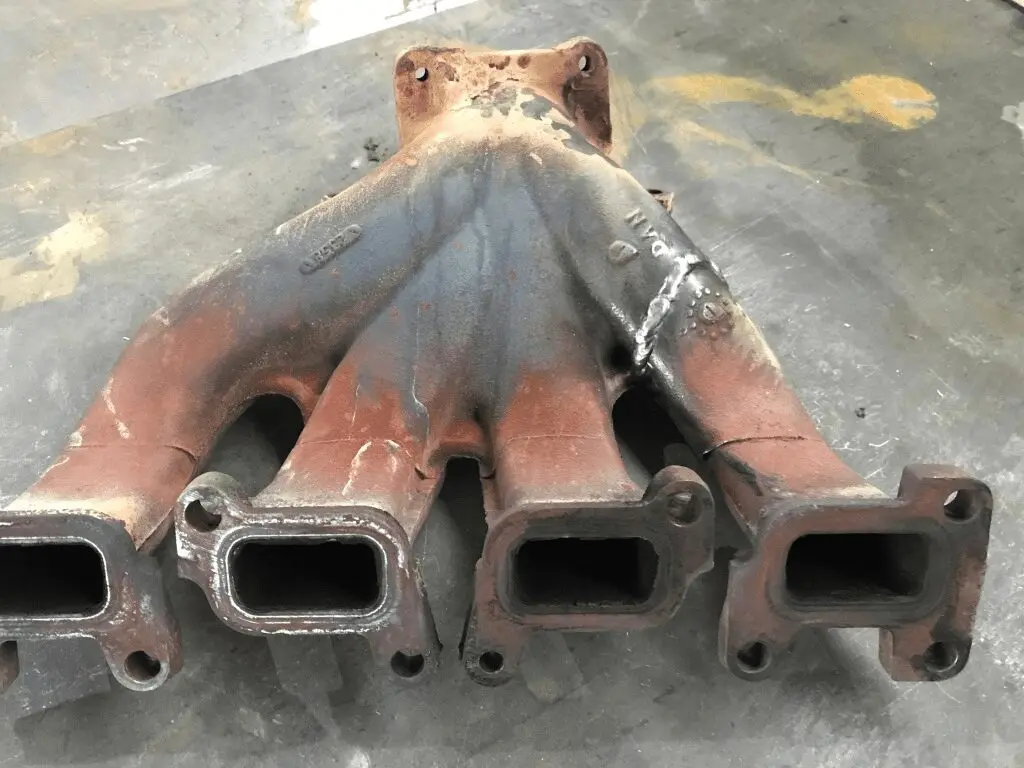
If you need to replace a part, then this work must be done in the correct sequence.
Exhaust manifold replacement
To replace the collector with your own hands, you need:
- De-energize the on-board network by disconnecting the battery (how to do this safely is described here);
- Drain the antifreeze;
- Dismantle the thermal shield (a casing that is installed on many modern cars), the receiver of the injection system (carburetor motors do not have this element) and the air filter;
- Unscrew the manifold flange fasteners from the intake pipe;
- Unbolt manifold from cylinder head. This procedure will differ depending on the modification of the power unit. For example, on 8-valve valves, the intake manifold is first removed, and then the exhaust;
- Remove the gasket and clean the cylinder head surface from its remnants;
- If in the process of dismantling the pins or threads in the mounting holes are damaged, then it is important to restore these elements;
- Install a new gasket;
- Connect a new manifold to the cylinder head (if a 4-cylinder internal combustion engine has 8 valves, then the assembly takes place in the reverse order to dismantling, that is, first the exhaust manifold and then the intake manifold);
- Tighten, but do not fully tighten the fastening bolts and nuts on the connections with the cylinder head;
- Connect the manifold with the front pipe or catalyst, having installed the necessary gasket before that;
- Tighten the mount on the cylinder head (this is done with a torque wrench, and the tightening torque is indicated in the technical literature for the car);
- Tighten the downstream pipe flange fasteners;
- Pour in new or filtered antifreeze;
- Connect the battery.
As you can see, the procedure for replacing a spider itself is simple, but when doing the work, you need to be careful so as not to rip off the thread in the cylinder head (the stud itself is easy to replace, and cutting a new thread in the cylinder head is much more difficult). For this reason, if there is no experience in working with a torque wrench or there is no such tool at all, then the work must be entrusted to a specialist.
In conclusion, we suggest looking at a small example of how to replace the exhaust manifold with a Renault Logan:
Questions and answers:
How does the intake manifold work? Air is drawn in by a vacuum that is generated in each cylinder. The flow goes first through the air filter and then through the pipes to each cylinder.
How does the exhaust manifold affect engine performance? There is a resonance in it. The valve closes abruptly and some of the gases are retained in the manifold. When the valve is reopened, the remaining gases can prevent the next flow from being removed.
How to tell the difference between an intake manifold and an exhaust manifold? The intake manifold connects to the pipe from the air filter. The exhaust manifold is connected to the vehicle's exhaust system.

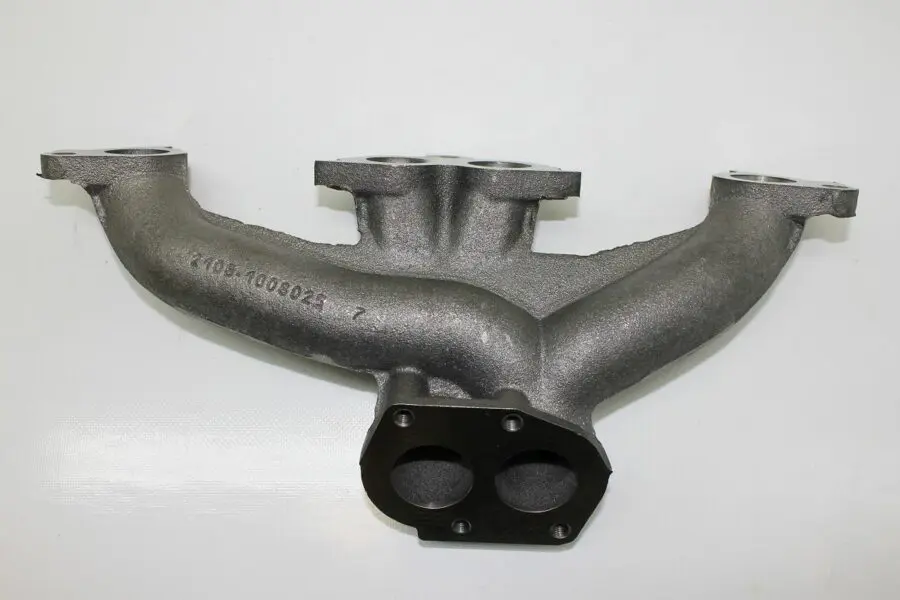
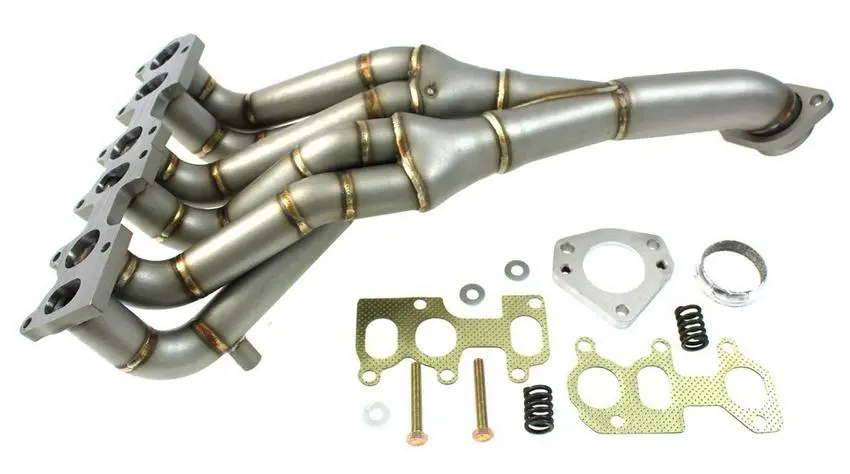
One comment
Larry
Satisfied, I'm looking for a turbo condition for the bezza.. even eksoz wants to look for it from the small tool for me to see